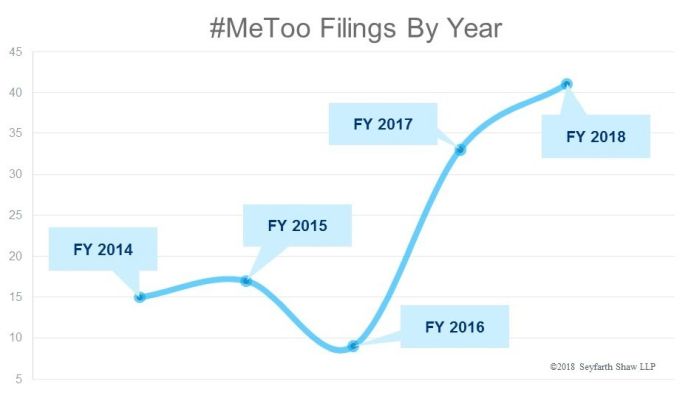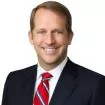A recent editorial authored by two female doctors in the Canadian Medical Association Journal proclaims that, "in the era of #MeToo, it is time for physicians to acknowledge that the medical profession is not immune to bullying, harassment and discrimination, and act to abolish these behaviours."1 While the #MeToo movement had unprecedented success increasing accountability for sexual misconduct among entertainment, political, and academic institutions, the healthcare industry did not receive the same attention. Recent findings demonstrate, however, that the #MeToo movement will soon leave its mark on health care as well.
Perception of Historic Tolerance of the Medical Profession
A 2018 report issued by the National Academies of Sciences, Engineering, and Medicine (NASEM) documents the problem of sexual harassment in the medical field in significant detail.2 Among other things, the NASEM report demonstrates that the academic environments in medicine exhibit characteristics that create high risk levels for the occurrence of sexual harassment. The report finds that, by far, the greatest predictor of sexual harassment is the organizational climate across an institution (also referred to as the perceptions of organizational tolerance). In short, women are more likely to be directly harassed and to witness the harassment of others in environments that are perceived as more tolerant or permissive of sexual harassment.
According to a recent AP investigation, the medical industry has traditionally been more forgiving of sexual harassment allegations within its own ranks. The AP found that "when doctors are disciplined, the punishment often consists of a short suspension paired with mandatory therapy that treats sexually abusive behavior as a symptom of an illness or an addiction" and that decades of complaints regarding the leniency of the physician disciplinary system for sexual misconduct toward patients or co-workers has produced little change in the practices of state medical boards.3 The AP report details that the causes underlying these issues are complex and varied, including:
- Failure of the medical community to take a stand against the issue;
- Institutional bias on part of medical review boards to rehabilitate instead of revoke licensure;
- Perceived tolerance for sexual harassment through precedent of lenient penalties for sexually abusive doctors which inhibits current disciplinary actions;
- Interference from administrative law judges who reduce stricter punishment sought by medical boards against sexually abusive doctors (though medicine boards may seek to override administrative decisions they disagree with);
- Hospital disinclination to report abusive doctors;
- Rehabilitative physician health programs that are either ineffective in addressing sexual misbehavior or ignore it altogether; and
- Patient and employee reluctance to challenge a medical professional or employers.
Regardless of the causes, the days of organizational tolerance of sexual harassment in the medical profession appear numbered as more and more individuals and institutions search for solutions to these historical challenges.
The #MeToo Movement is Here to Stay
Though perhaps not subject to the same media coverage initially afforded, the #MeToo movement remains an active force in the workplace. Title VII filings accounted for 56 percent of all filings with the Equal Employment Opportunity Commission (EEOC) in FY 2018. Perhaps the most striking trend of all is the substantial increase in sex-based discrimination filings, primarily the number of sexual harassment filings.4 #MeToo added fuel to this area of the EEOC's agenda, with 74 percent of the EEOC's Title VII filings this year targeting sex-based discrimination. Compare this to FY 2017, where sex based discrimination accounted for 65 percent of Title VII filings. Of the FY 2018 sex discrimination filings, 41 filings included claims of sexual harassment. 11 of those filings were brought in the last three days of the fiscal year alone. The total number of sexual harassment filings was notably more than FY 2017, where sexual harassment claims accounted for 33 filings.

How Medical Employers Can Challenge Perceptions of Organizational Tolerance
The #MeToo movement presents myriad challenges that defy one-size-fits-all solutions. However, there are practices that can assist employers in their quest to create harassment free workplaces. As the research suggests, creating an anti-harassment culture begins with company leadership and then can permeate the entire organization. Beyond simple compliance, legal measures should be implemented with the goal of improving accountability and reducing the occurrence of sexual harassment. Some measures include:
- Update company policies to clarify protections and conduct, emphasize non-retaliation provisions, and ensure multiple reporting channels and robust response protocols;
- Conduct proper, substantive investigations that are not outcome determinative; and
- Enhance and refresh sexual harassment training from the top down and reinforce through communication and modeling.
Identifying and implementing active measures to challenge the perception of tolerance for any harassing or abusive behavior within an organization is an essential step toward meeting the #MeToo movement's call for a respectful work environment for all.
Footnotes
1 Jayna M. Holroyd-Leduc, MD and Sharon E. Straus, MD MSc, #MeToo and the medical profession, Aug. 20, 2018, available at http://www.cmaj.ca/content/190/33/E972#ref-2 (last visited Feb. 21, 2019).
2 National Academies of Sciences, Engineering, and Medicine 2018, Sexual Harassment of Women: Climate, Culture, and Consequences in Academic Sciences, Engineering, and Medicine, The National Academies Press (2018)
3 Jeff Horowitz and Juliet Linderman, AP investigation: Doctors keep licenses despite sex abuse, Apr. 14, 2018, available at https://www.apnews.com/fd90fdeabd1042679513ab0bccdee9ab (last visited Feb. 21, 2019).
4 https://www.seyfarth.com/dir_docs/publications/Law360-EEOC-Puts-The-Pedal-To-The-Metal-FY2018-Results.pdf
The content of this article is intended to provide a general guide to the subject matter. Specialist advice should be sought about your specific circumstances.


